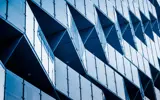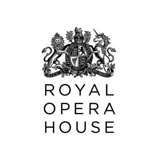The Role of Glass Façades in Modern Architectural Aesthetics and Trends

Glass façades have become one of the most defining elements of contemporary architecture, shaping not only the appearance of buildings but also their performance and interaction with the surrounding environment. No longer limited to simple curtain wall systems, today’s façades are complex, dynamic surfaces that merge beauty, functionality, and innovation. Their transparency and reflectivity capture the character of a building’s surroundings, while advances in materials and design techniques have expanded what is possible in terms of both creativity and practicality.
Evolving Design Trends
One of the most prominent trends in modern architecture is the pursuit of minimalist transparency. Large expanses of clear glazing with slim structural supports create a sense of lightness and openness that connects interior spaces with the outside world. This style not only offers uninterrupted views but also gives buildings a clean, uncluttered appearance that aligns with contemporary tastes. Alongside this, architects are increasingly turning to gradient tints and fritted glass patterns to balance light control with visual appeal. These treatments can change character as sunlight moves, adding variety and interest to the façade.
Technology is also influencing the way glass façades are used. Smart glass that adjusts its opacity in response to sunlight, as well as LED-integrated façades that can display patterns or information, are transforming buildings into interactive features. This shift allows architects to create designs that are both adaptable and striking, blending physical form with technological capability. Irregular geometries and faceted surfaces have also become more common, with angled or curved glass panels producing complex reflections and light effects that make buildings appear different from every angle.
Balancing Aesthetics with Sustainability
Sustainability is now a key consideration in every stage of architectural design, and glass façades are no exception. Double-skin systems allow for natural ventilation and temperature regulation, while high-performance glazing helps to reduce heat gain and improve insulation. Many buildings now incorporate greenery into their façade designs, linking urban structures to natural elements and improving the wellbeing of those inside. These approaches ensure that modern glass façades not only look impressive but also contribute to energy efficiency and environmental responsibility.
Lasting Impact and Future Potential
From a visual perspective, glass façades create a connection between indoor and outdoor spaces, allowing light to flood interiors while providing panoramic views. They also act as reflective surfaces that mirror the sky, surrounding buildings, and city life, giving them a dynamic quality that changes with time and weather. Functionally, modern glazing offers benefits such as acoustic insulation and solar control, while advanced structural glass solutions allow for frameless, curved, and expansive designs. Even older buildings can benefit through retrofitting, replacing outdated glass with modern high-performance systems to improve both appearance and performance.
Glass façades are more than a design statement, they are an architectural tool that combines beauty, innovation, and practicality. As trends continue to evolve towards sustainable design, technological integration, and expressive forms, glass will remain a material that defines the look and feel of our built environments for decades to come.

About the author
Glass Aftercare
Glass Aftercare is the commercial glass maintenance, façade refurbishment and glazing repair specialist. Providing a service you can trust, all across London and the Home Counties.
GLASS AFTERCARE ARE TRUSTED BY








